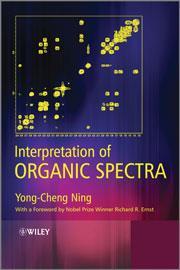Interpretation of organic spectra
Interpretation of organic spectra
Yong-Cheng Ning
Wiley-Blackwell
2011 | 424pp | ?70 (HB)
ISBN 9780470825167
Reviewed by Andy Benniston

As a person who, for the past ten years, has taught undergraduate students the basics of how to identify unknown organic compounds using spectra I looked forward to reading this book by Ning.
After a quick flick through a few chapters, though, I was a little disappointed, since many of the chemical structures were not drawn that well. However, after reading the first chapter properly I really warmed to the book since it answered a problem that had been troubling me over a 1H NMR spectrum for one of my student’s compounds.
The discussion on chemical equivalence, and especially the example of a Hantzsch pyridine, reminded me of a symmetry argument that I had completely forgotten about. The rest of chapter one is very comprehensive and covers many of the details that both undergraduate and postgraduate students should know if they were serious about the interpretation of 1H NMR spectra.
The short but detailed chapter two covers the use of 13C NMR spectroscopy and leads very nicely to the use of 2D NMR spectra for working out the structure of compounds by looking for correlations. The only downside of this chapter is the rather poor drawing of a porphyrin derivative where the bond angles are very strange and the overall structure is unclear.
There is a change of tack for chapters four and five which focus on the use of mass spectrometry and infrared spectroscopy to aid in the identification of an unknown. The final chapter is the real crux of the book where the author goes through several examples and spells out very clearly how to deduce the structure of an unknown. The examples are complex and a real test to sort out, but the reader is led step-by-step through the different spectra to arrive at the final solution.
Overall, this is a very good book, ideal for both dedicated undergraduate and postgraduate students, but ’pure’ organic chemists will be disappointed by some of the drawings.
RSC members can purchase this book direct from the publishers for a 30% discount on the RRP. See the member benefits link on this page.












No comments yet